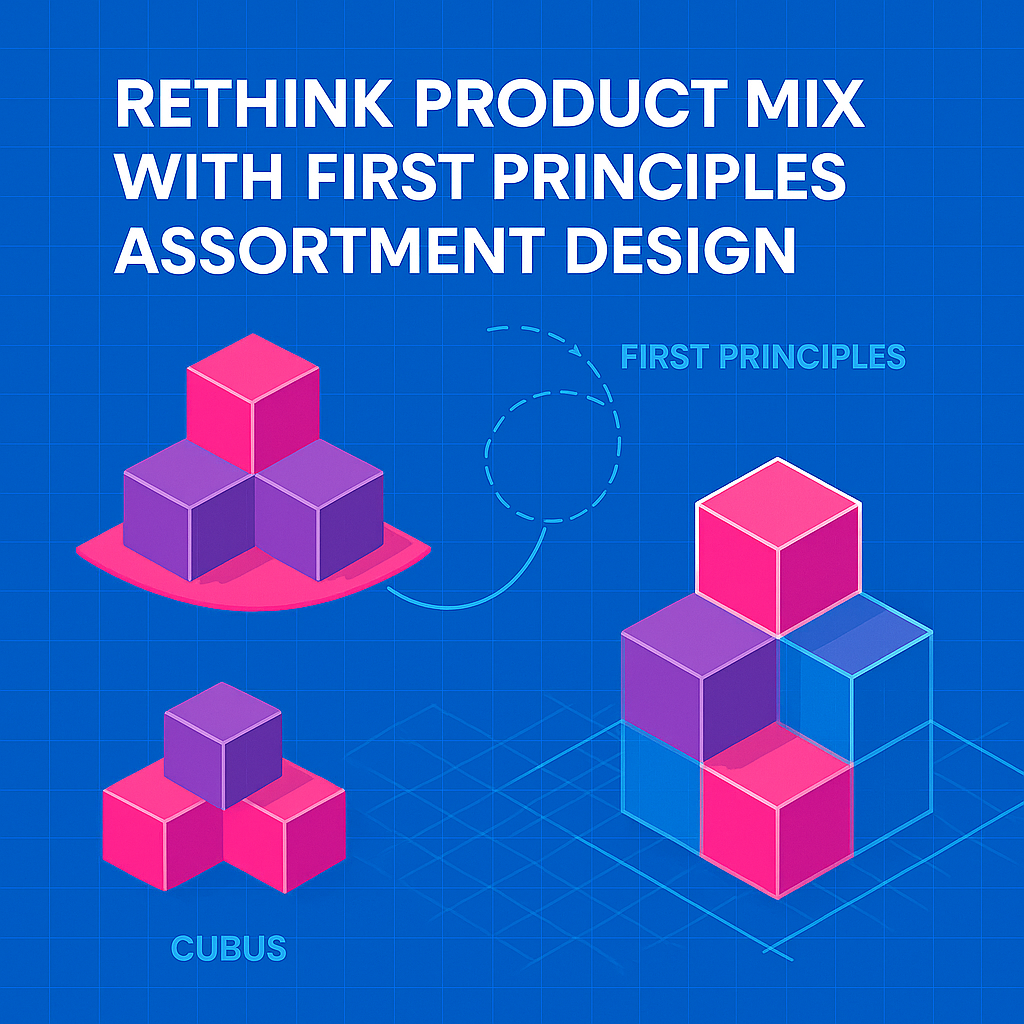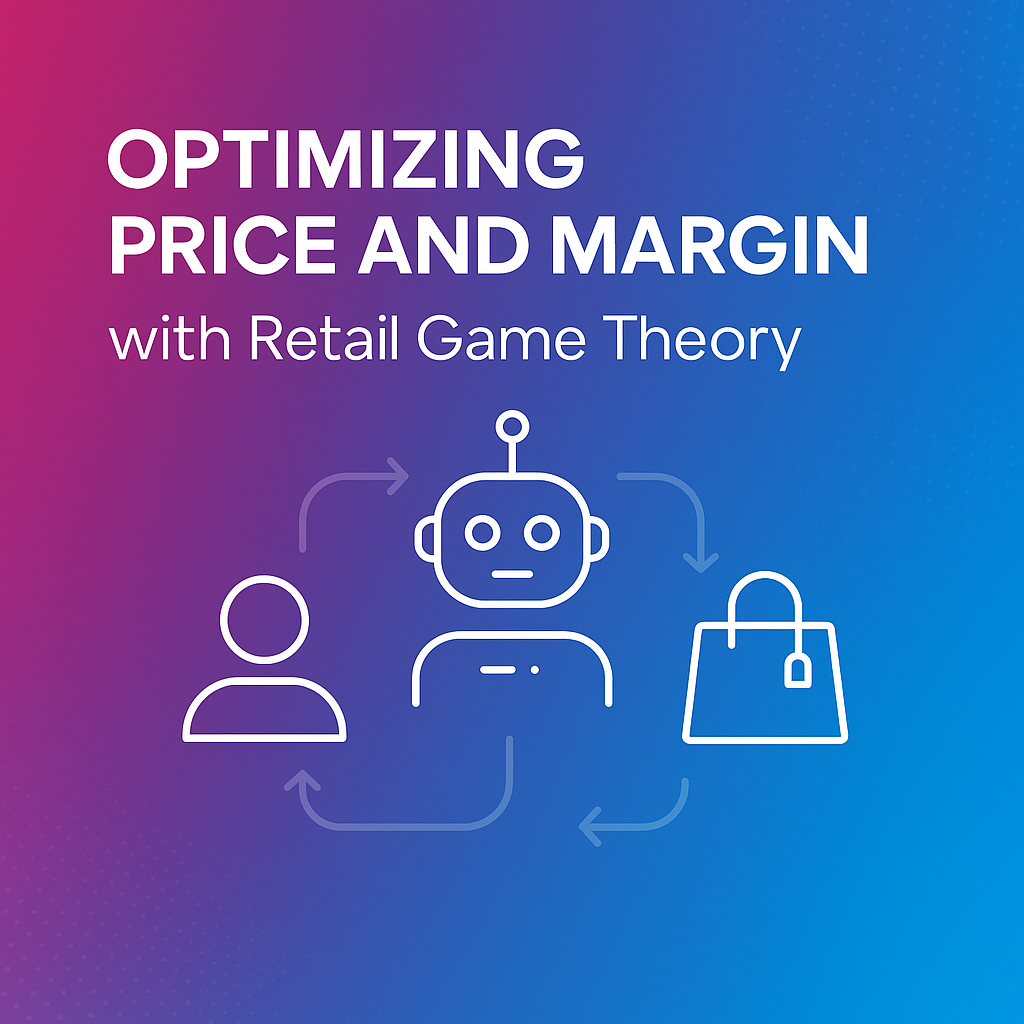Rethink Product Mix with First Principles Assortment Design

In an era where retail is being reshaped by technology, consumer behavior, and supply chain innovation, legacy assortment strategies are no longer enough. Retailers who continue to rely on historical sales data, supplier-driven lineups, and outdated category structures are optimizing for a world that no longer exists. To stay competitive, it’s time to apply first principles assortment design,a strategy that rebuilds product mix decisions from the ground up based on fundamental customer needs, not inherited assumptions.
This approach challenges conventional assortment planning strategy and opens the door to radical retail innovation frameworks. By asking foundational questions,What do customers truly want? What value does each SKU deliver?,retailers can unlock smarter, leaner, and more profitable product assortments.
Let’s explore how first principles thinking can revolutionize your assortment design and why it’s the key to future-proofing your retail strategy.
Why First Principles Thinking Matters in Retail Assortment
First principles thinking, popularized by Elon Musk, involves breaking down complex problems into their most basic truths and reasoning up from there. In retail, this means questioning every assumption about why certain products are carried, how they’re grouped, and what role they play in the customer journey.
Traditional assortment planning often starts with past performance: What sold well last season? What are competitors carrying? What does the supplier recommend? These are second-order questions. First principles assortment design starts with a different set of questions:
– What fundamental problem is the customer trying to solve?
– What outcome are they hiring this product to deliver?
– What is the minimum viable assortment that fulfills this need?
This reframing leads to more strategic SKU rationalization, better alignment with customer intent, and higher capital efficiency.
The Failure of Incremental Optimization in Product Mix
Retailers have spent decades refining their assortment planning strategy through incremental improvements. But as the original article highlights, this often leads to local maxima,small gains within a flawed system. You can optimize shelf space forever and still miss the opportunity to eliminate the shelf entirely.
Consider eyewear before Warby Parker. The industry accepted $300 frames as standard. Warby Parker applied first principles: glasses are plastic and glass. Material costs are $10–$20. The rest is markup and inefficiency. By rethinking the product mix from first principles, they created a direct-to-consumer model with a radically better value proposition.
Similarly, Stitch Fix didn’t optimize store assortments,they eliminated stores. They realized customers don’t want to shop; they want to look good with minimal effort. Their algorithmic curation model is a textbook example of merchandising from first principles.
These companies didn’t just tweak the assortment. They redefined it based on what customers fundamentally value.
How to Apply First Principles Assortment Design
Implementing first principles assortment design requires a structured, disciplined approach. Here’s how to get started:
1. Identify Core Assumptions
– Why do you carry the SKUs you do?
– Are these based on customer needs or supplier relationships?
– Are you optimizing for margin, volume, or customer satisfaction?
2. Break Down to Fundamentals
– What is the core job each product performs?
– What are the true cost drivers (materials, logistics, holding costs)?
– What are customers trying to achieve with this product?
3. Rebuild the Assortment
– Design from the customer’s problem backward.
– Use data-driven product selection to validate assumptions.
– Eliminate SKUs that don’t add differentiated value.
4. Test and Iterate
– Pilot lean assortments in select channels or regions.
– Measure impact on conversion, satisfaction, and inventory turns.
– Adjust based on real-time feedback and behavioral data.
This process not only improves product mix optimization but also accelerates innovation cycles and reduces capital tied up in slow-moving inventory.
Real-World Examples of First Principles in Assortment Design
Let’s examine how leading companies applied this thinking to create new retail categories:
The footwear industry assumed petroleum-based materials and global supply chains were necessary. Allbirds asked: What do customers really want in a shoe? Comfort, durability, sustainability. They rebuilt the product using merino wool and sugarcane-based soles, reducing carbon footprint by 30%. Their minimalist product line is a masterclass in strategic SKU rationalization.
Traditional beauty brands launched wide assortments based on seasonal trends. Glossier started with a blog, Into The Gloss, and asked: What do customers actually want? The answer: self-expression and community. They co-created products with users, launching only what resonated. Their lean, high-performing assortment is built entirely from customer truths.
Most retailers believed more choice equals more value. Costco flipped the script. They asked: What reduces customer search costs? The answer: fewer, better options. With just 4,000 SKUs (vs. Walmart’s 120,000), Costco drives higher productivity and loyalty. Their assortment is optimized not for breadth, but for clarity and trust.
Benefits of First Principles Assortment Design
Retailers who adopt this approach unlock multiple strategic advantages:
– Reduced Inventory Costs: By eliminating low-value SKUs, capital is freed for high-velocity products.
– Higher Conversion Rates: Assortments aligned with customer intent convert better.
– Faster Merchandising Cycles: Leaner assortments are easier to test, iterate, and scale.
– Greater Differentiation: Unique product mixes based on customer truths are harder to replicate.
– Improved Customer Experience: Less clutter, more relevance, and better outcomes.
Common Mistakes to Avoid
1. Confusing historical performance with future potential
2. Letting supplier incentives dictate product mix
3. Over-relying on category norms instead of customer needs
4. Failing to test assumptions with real customer data
5. Applying first principles thinking without organizational support
Avoiding these pitfalls requires cross-functional alignment between merchandising, analytics, and customer experience teams.
Future Trends in Assortment Planning
As AI and real-time data become more accessible, first principles assortment design will become more scalable. Expect to see:
– Hyper-personalized assortments by customer segment
– AI-driven SKU rationalization models
– Dynamic product mix optimization by location or channel
– Integration of sustainability metrics into assortment decisions
Retailers who build the capability to rethink their product mix from the ground up will lead the next wave of retail innovation.
You can read this blog from Stylumia on the future : Embracing consumer demand assymetry in retail
Conclusion
First principles assortment design isn’t just a new framework,it’s a necessary evolution. As legacy models break down under the weight of changing consumer behavior and technological disruption, retailers must stop optimizing the past and start designing the future.
By questioning inherited assumptions, focusing on fundamental customer needs, and rebuilding assortments from the ground up, retailers can unlock 10x improvements in efficiency, relevance, and profitability. The companies that lead the next decade of retail won’t be those with the best historical data,they’ll be the ones asking the right questions.
The raw materials for transformation are already in your hands. The only thing standing in the way is outdated thinking. Strip it away. Start from atoms. Rebuild your assortment from first principles.
Key Takeaways
– First principles assortment design starts with customer needs, not legacy data.
– Traditional assortment planning strategy often leads to local maxima.
– Strategic SKU rationalization improves capital efficiency and customer experience.
– Real-world examples like Allbirds, Glossier, and Costco show the power of this approach.
– Retailers must create protected teams and metrics to enable first principles innovation.
– Future assortment planning will be data-driven, lean, and hyper-personalized.
– The biggest risk is optimizing outdated models while others redesign the game.
Frequently Asked Questions
Q1: What is first principles assortment design?
A1: It’s a retail strategy that rebuilds product mix decisions from fundamental customer needs, rather than relying on historical sales data or industry norms.
Q2: How does this differ from traditional assortment planning?
A2: Traditional planning focuses on past performance and supplier input. First principles assortment design starts with the customer’s problem and works backward to create a lean, relevant product mix.
Q3: What are the benefits of using this approach?
A3: Benefits include reduced inventory costs, higher conversion rates, better customer alignment, and faster innovation cycles.
Q4: How can retailers begin implementing this strategy?
A4: Start by identifying core assumptions, breaking down to customer truths, and rebuilding the assortment using data-driven product selection and testing.
Q5: What role does data play in this process?
A5: Data validates assumptions, identifies high-performing SKUs, and enables dynamic optimization across channels and customer segments.
Q6: Can this approach work for large retailers with complex operations?
A6: Yes, but it requires structural changes,dedicated teams, new metrics, and executive support,to succeed at scale.
Q7: What’s the biggest mistake retailers make with assortment design?
A7: Relying too heavily on legacy data and failing to question whether current SKUs still serve fundamental customer needs.




